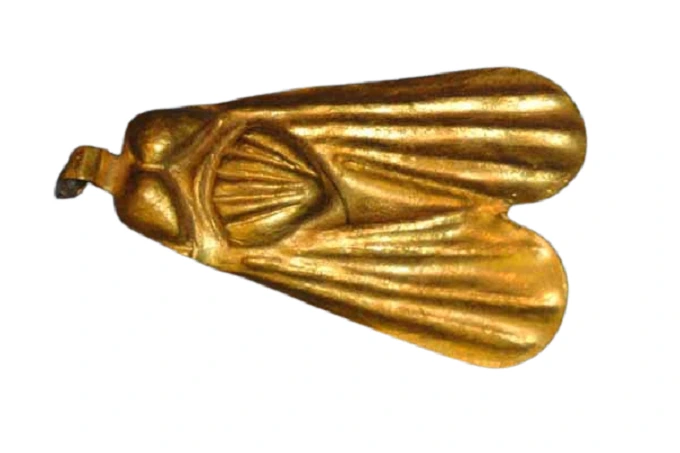The Cairo Museum houses treasures that previously belonged to ancient Egypt’s governing dynasties. Statues, mummies of monarchs and priests; tomb artefacts; daily items; Egyptian queens’ jewels are only a few of the most noteworthy relics.
The Cairo jewelry line is dominated by bracelets and necklaces with animal decorations. Cobras, eagles, scarab beetles, and other animals were often used as decorations. Animals and birds were used to represent many Egyptian gods.
Flies were often employed as embellishments for powerful people’s jewelry. Orders for excellence in military operations were awarded in the shape of flies. Gold flies, for example, were the greatest military honors under Pharaoh Thutmose III, who reigned in the 15th century BC.
Queen Ahhotep’s pectoral necklace is the most renowned decoration composed of golden flies, discovered in 1859. Their son presented it to the pharaoh’s wife Ta’a II (also known as Seqenenre Tao) in recognition of her achievements and cementing role in the war against the Hyksos. The necklace was made up of three insects, and it’s unclear if one was given for each accomplishment or whether the full necklace was presented at once.
Yahmos-Pen-Nehebt, the reigning dynasty’s commander, was given an ornament with six gold flies and three lions. Three exquisite insects were awarded to another aristocratic Egyptian.
In the graves of army officers, their spouses, and civic authorities, ornaments with varied quantities of flies were discovered. Apparently, at some time, the prize was presented to everyone who did anything brave.
The Egyptians started to adorn the medal for military excellence with gold flies for unexplained reasons. Egyptologists have differing viewpoints on the subject:
- On the battlefield, death is always accompanied by flies.
- Soldiers that are intended to be bothersome and unstoppable in combat are represented by the fly.
- The fact that flies are just as plentiful as fighters may have impacted this specific kind of reward.
